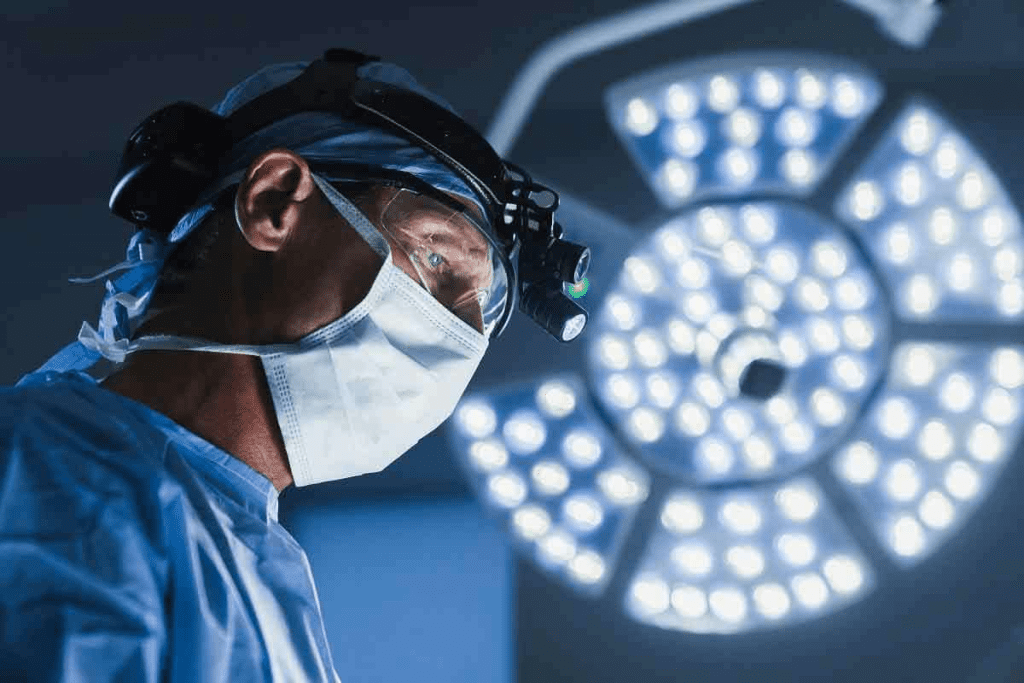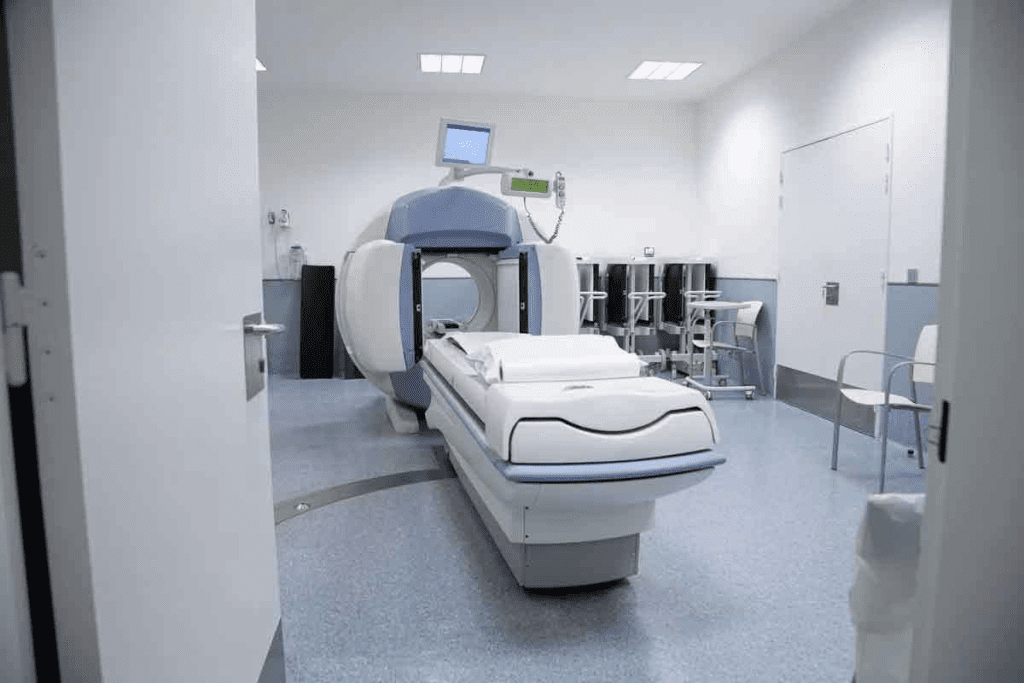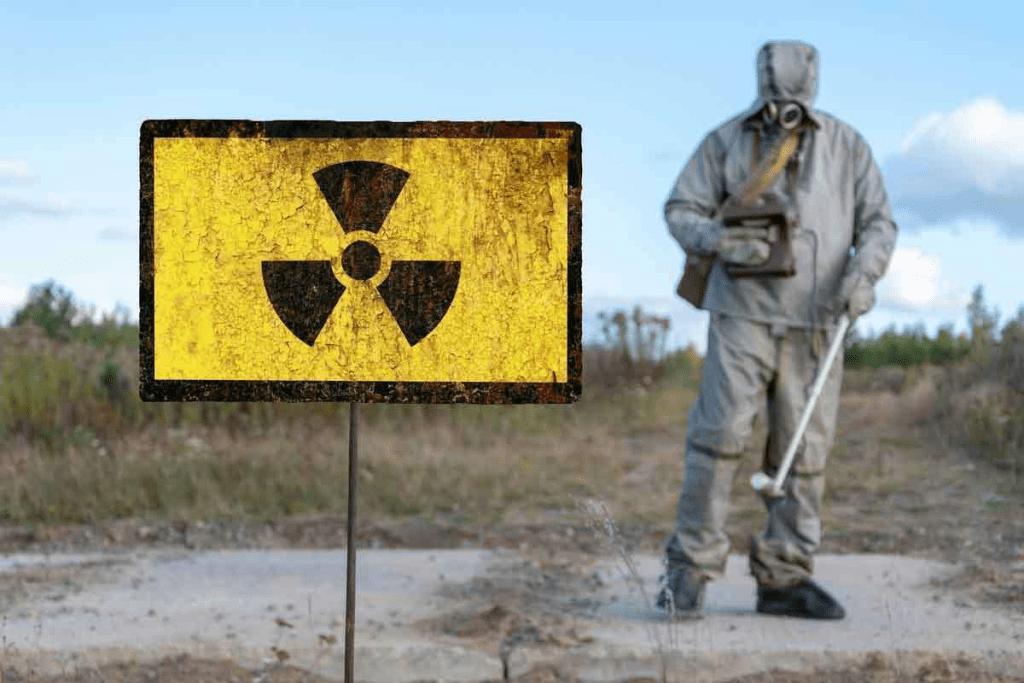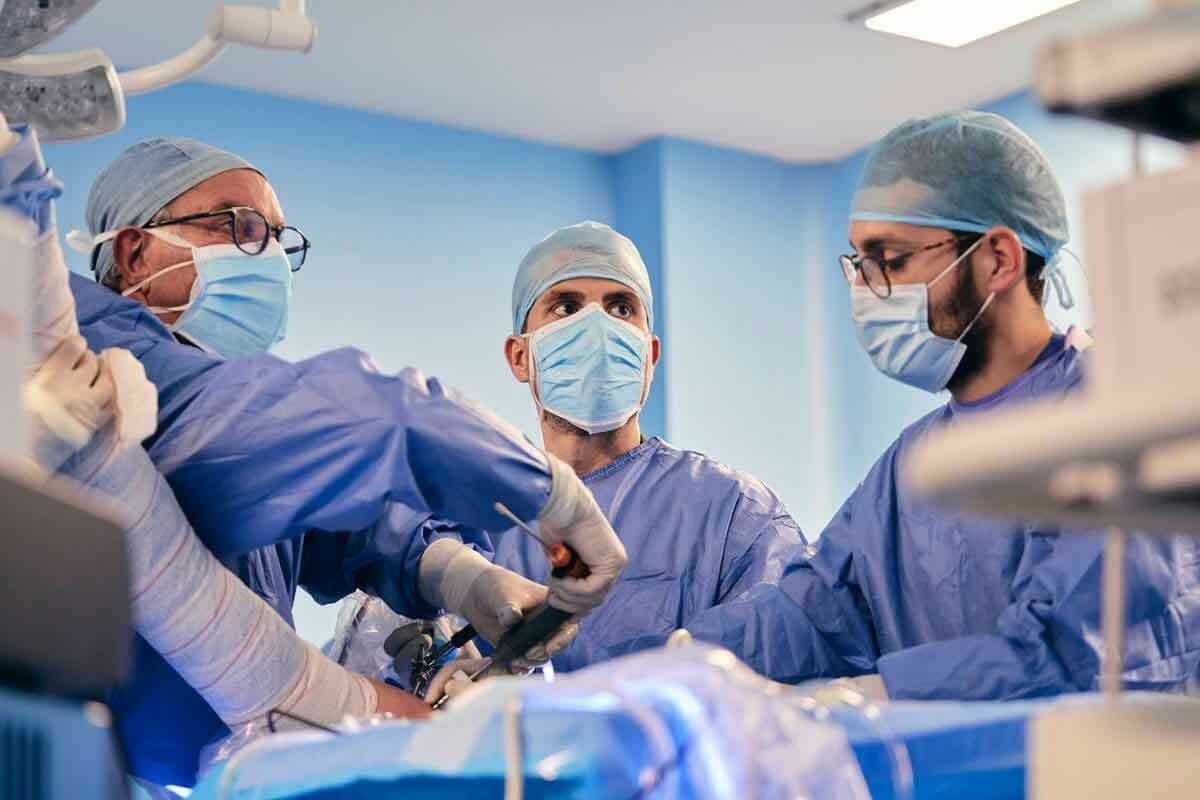Last Updated on November 27, 2025 by Bilal Hasdemir

We often view radiation with caution, but it’s key in modern healthcare and more. Radiation is energy all around us, in two main types: non-ionizing and ionizing. Many wonder how can radiation be beneficial to humans, and it plays a crucial role in medical imaging, cancer treatment, sterilization of medical equipment, and diagnosis of various diseases.
Radiation offers many benefits, from medical treatments to industrial uses. In medicine, it helps make accurate diagnoses and treatments, leading to better patient care. We use radiation in many ways, showing its positive uses in everyday life.
Exploring the benefits of radiation shows its wide and important uses. By knowing its role, we can see its value in making our lives better.
Key Takeaways
- Radiation is a form of energy that surrounds us.
- It has two main types: non-ionizing and ionizing radiation.
- Radiation is key in medical treatments and diagnoses.
- Its uses go beyond medicine to industry and research.
- Understanding radiation’s benefits helps us appreciate its value.
Understanding Radiation: Beyond the Misconceptions

Radiation is often misunderstood. But, knowing its types and uses shows its many benefits. We’ll look at the different kinds of radiation and their uses in various fields.
Types of Radiation and Their Properties
There are two main types of radiation: non-ionizing and ionizing. Ionizing radiation has enough energy to remove electrons from atoms. On the other hand, non-ionizing radiation does not. Non-ionizing radiation includes radio waves, microwaves, and visible light, which are generally safe.
Ionizing radiation, like X-rays and gamma rays, is used in medical treatments and imaging. This shows how radiation can be used for good.
| Type of Radiation | Properties | Examples |
| Non-ionizing | Low energy, cannot remove electrons from atoms | Radio waves, microwaves, visible light |
| Ionizing | High energy, can remove electrons from atoms | X-rays, gamma rays |
The Science Behind Controlled Radiation Use
The key to using radiation safely is controlling it. By understanding radiation’s properties, we can use it well. For example, in medical imaging, controlled doses of ionizing radiation help create detailed images.
This helps doctors diagnose and treat many conditions. It shows how radiation technology benefits us.
How Can Radiation Be Beneficial to Humans: An Overview

Radiation is key in modern medicine and industry, bringing many benefits. It has led to better patient care and more efficient industrial processes. Thanks to new technology, we see big improvements in how we use radiation.
The Evolution of Radiation Technology
Radiation technology has grown a lot, with big steps in medical imaging and therapy. Today’s tools help doctors target diseases more accurately. This means less harm to healthy parts and better results.
For example, radiation therapy now fights cancer more effectively. This is thanks to new tech that helps doctors aim better.
Safety Protocols and Risk Management
Using radiation safely is a top priority. We have strict rules and plans to keep risks low. These steps help protect everyone from too much radiation.
Knowing the good and bad of radiation helps us see its worth. It’s all about using it right and keeping it safe. This way, we get the most out of it for health and work.
Medical Imaging: Seeing Inside the Human Body
Radiation in medical imaging has changed how we diagnose diseases. Technologies like X-rays, CT scans, and nuclear medicine imaging are key in healthcare. They help doctors see inside the body, making diagnoses and treatments more accurate.
X-rays: The Foundation of Medical Imaging
X-rays are a cornerstone in medical imaging. They use radiation to show internal body structures. X-rays are great for spotting bone fractures, lung diseases, and foreign objects.
They are simple yet effective, giving doctors quick diagnostic info.
CT Scans: Advanced 3D Visualization
Computed Tomography (CT) scans offer detailed 3D views of the body. They use X-rays from different angles to show complex areas. This tech is key for spotting tumors, vascular diseases, and injuries.
CT scans are vital in emergency care and for guiding procedures.
Nuclear Medicine Imaging for Early Detection
Nuclear medicine uses radioactive tracers to diagnose and treat diseases. Techniques like PET scans show how tissues work, helping find cancer and neurological issues early. The World Nuclear Association says nuclear medicine is essential in healthcare, with radioisotopes used in many medical ways.
We use these methods to track disease and check treatment success.
Radiation Therapy: Transforming Cancer Treatment
Radiation therapy has changed cancer treatment, bringing hope to people everywhere. It’s a key part of treating many cancers. By using ionizing radiation, it kills cancer cells or slows them down, helping patients live better lives.
External Beam Radiation Therapy
External Beam Radiation Therapy (EBRT) is a non-invasive method. It uses a machine to send radiation beams to the tumor from outside the body. This way, it targets tumors precisely, protecting healthy tissues nearby. EBRT is used for many cancers, like those in the brain, breast, and prostate.
Internal Radiation and Brachytherapy
Brachytherapy places a radioactive source inside or near the tumor. It gives a high dose of radiation to cancer cells, but less to healthy tissues. This method is used for cancers of the cervix, prostate, and breast.
Improving Survival Rates and Quality of Life
Radiation therapy helps improve survival rates and quality of life for cancer patients. It controls tumor growth, easing symptoms and pain. Advances in technology make treatments better, giving hope to those with cancer.
Nuclear Medicine: Diagnosis and Treatment Combined
Nuclear medicine uses radioactive isotopes to help patients. It diagnoses and treats diseases like cancer and some neurological disorders. This method is very effective.
Radioactive Isotopes in Laboratory Testing
Radioactive isotopes help find diseases early. They are attached to compounds that target specific body areas. This allows for precise imaging and diagnosis.
Technetium-99m is often used because it’s great for medical imaging.
- Early detection of diseases through sensitive imaging techniques
- Accurate diagnosis due to targeted imaging
- Monitoring of disease progression and treatment response
Organ Function Studies Using Radiation
Nuclear medicine studies organ function. It uses techniques like renal scans and thyroid uptake tests. These help check organ health and guide treatment.
“Nuclear medicine procedures provide valuable information about the physiological function of organs and systems, aiding in the diagnosis and management of complex conditions.”
Targeted Radiopharmaceutical Therapies
Targeted radiopharmaceutical therapies use radioactive isotopes. They are attached to molecules that target cancer cells or diseased tissues. This method reduces damage to healthy tissues.
For example, Iodine-131 treats thyroid cancer, and Lutetium-177 treats neuroendocrine tumors. These therapies are changing cancer treatment and improving patient lives.
Industrial Applications: Enhancing Manufacturing and Quality Control
Radiation has many uses in industry, from checking materials without damage to making medical tools safe. It’s a key tool in many fields, helping make products better and safer.
Non-Destructive Testing with Radiation
Non-destructive testing (NDT) with radiation is key in fields like aerospace, cars, and building. It lets us check materials and parts without harming them. This makes sure products are strong and reliable.
Radiographic testing uses X-rays or gamma rays to look inside welds and other parts. It helps find any problems without damaging the item.
Sterilization of Products and Equipment
Radiation is also used to make medical tools, drugs, and food safe. Gamma radiation is often used because it kills bacteria and germs well. It’s great for items that can’t handle heat or chemicals, keeping them safe for use.
| Industry | Application | Benefits |
| Aerospace | Non-destructive testing | Ensures component integrity, reduces maintenance costs |
| Medical | Sterilization of equipment | Eliminates pathogens, ensures patient safety |
| Food | Irradiation for preservation | Extends shelf life, reduces foodborne illnesses |
The World Health Organization says, “Radiation sterilization is a well-established and widely used method for sterilizing medical devices.” This shows how important radiation is for making products safe and of high quality in many industries.
Food Safety and Preservation Through Irradiation
Food irradiation uses ionizing radiation to make food safer. It’s known to cut down on foodborne illnesses by killing harmful bacteria. We’ll look into how it works and its role in keeping food fresh.
The Irradiation Process
Food irradiation exposes food to ionizing radiation in a controlled way. It can be done with gamma rays, electron beams, or X-rays. The method chosen depends on the food type and the desired effect.
Benefits and Safety Considerations
Food irradiation extends shelf life and lowers the risk of foodborne diseases. It also helps in exporting food to countries with strict rules. But, we must ensure it doesn’t harm the food’s nutritional value or safety.
| Benefits | Safety Considerations |
| Extended shelf life | Nutritional value preservation |
| Reduced risk of foodborne diseases | Regulatory compliance |
| Enhanced export capabilities | Proper handling and storage |
Understanding food irradiation and its benefits shows its importance in food safety and preservation. It’s a technology that, when used right, greatly benefits public health.
Scientific Research and Archaeological Applications
Radiation is key in science and archaeology. It helps us learn about the world and its past in new ways.
Carbon Dating and Historical Discoveries
Carbon dating is a big deal in archaeology. It lets us figure out how old old things are by looking at radioactive carbon-14. Carbon dating has changed archaeology, helping us understand history and cultures better.
- Accurate dating of archaeological sites
- Reconstruction of historical timelines
- Insights into ancient cultures and civilizations
Material Science and Radiation Research
In material science, radiation is essential. It helps us study how materials change when exposed to radiation. This research has led to new materials and technologies.
- Studying radiation effects on material properties
- Development of radiation-resistant materials
- Advancements in nuclear technology applications
Radiation is important for science and archaeology. It helps us learn more about the world and its history.
Reducing Invasive Procedures: Radiation in Modern Healthcare
Radiation technology has changed healthcare a lot. It has made it possible to diagnose and treat many conditions without needing to cut into the body. This is thanks to the new ways we use radiation today.
Minimizing Hospital Stays and Recovery Time
Radiation in healthcare has cut down on how long people stay in the hospital and how long they take to get better. It lets doctors make accurate diagnoses and target treatments precisely. This means patients can get back to their lives faster.
For example, radiation therapy is a big help in fighting cancer. It’s a way to treat cancer without surgery, which is less invasive.
Also, new ways to deliver radiation have made treatments better and less harmful. This has made patients’ lives better during and after treatment.
Multidisciplinary Approaches to Patient Care
Today, doctors use a multidisciplinary approach to care for patients. This means combining radiation therapy with other treatments like surgery or chemotherapy. It helps make treatment plans that fit each patient’s needs.
This team effort makes treatments more effective and safer. It reduces the risks of problems from invasive procedures. So, patients get care that’s more tailored and efficient, thanks to advances in radiation technology.
Conclusion: Balancing Benefits and Responsible Use of Radiation
Radiation has many benefits in fields like medicine, cancer treatment, and science. It improves patient care, advances medical treatments, and helps us understand the world better.
But, we must use radiation responsibly. We need to limit exposure and manage risks. This way, we can use radiation safely and effectively.
Knowing how radiation helps us can show its value in healthcare, industry, and research. Our goal is to provide top-notch healthcare and support to patients worldwide. We will do this by using radiation wisely and managing risks carefully.
FAQ
What are the benefits of radiation in medical treatments?
Radiation helps a lot in medical treatments. It’s used for cancer, imaging, and nuclear medicine. It helps find and treat diseases, making patients’ lives better.
How does radiation therapy work in cancer treatment?
Radiation therapy kills or damages cancer cells. It makes tumors smaller and helps patients live longer. It can be given from outside or inside the body.
What is the role of radiation in medical imaging?
Radiation is key in medical imaging. It’s used in X-rays, CT scans, and nuclear medicine. It helps doctors find and treat diseases early.
How is radiation used in industrial applications?
In industry, radiation is used for testing, sterilizing, and improving processes. It helps make products safer and better.
What are the benefits of food irradiation?
Food irradiation makes food safer. It kills harmful bacteria, keeps food fresh longer, and reduces sickness from food.
How is radiation used in scientific research and archaeology?
Radiation helps in research and archaeology. It’s used for dating, studying materials, and understanding history. It helps us learn more about the past.
What safety protocols are in place for radiation use?
There are strict safety rules for using radiation. These rules help keep people safe in healthcare, industry, and research.
How does radiation contribute to reducing invasive procedures in healthcare?
Radiation makes some procedures less invasive. This means fewer surgeries, shorter hospital stays, and quicker recovery. It improves patient care.
What is the significance of nuclear medicine in patient care?
Nuclear medicine is special because it diagnoses and treats at the same time. It uses radioactive isotopes to study organs and treat diseases. It greatly improves patient care.
Reference
- U.S. Nuclear Regulatory Commission – Uses of Radiation in Medicine
https://www.nrc.gov/about-nrc/radiation/around-us/uses-radiation






